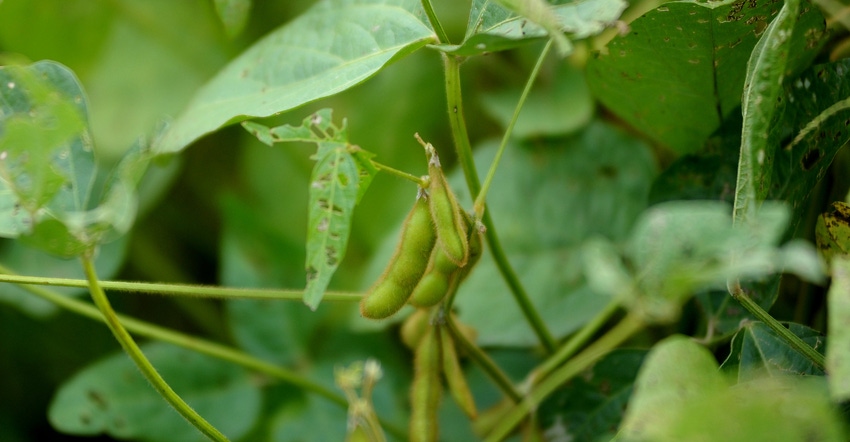March 8, 2021

From edamame to cooking oil and tofu to livestock rations, soybeans are a source of protein in food and feed around the world. However, as yields increase, protein content can slip. So, researchers from seven universities are trying to figure out why.
A Kansas State University State study of 40 years’ worth of data revealed that while overall seed yield increased by 50%, protein content decreased by 1.2%. The study compared 1980s genotypes and 2010 genotypes.
According to Ignacio Ciampitti K-State Research and Extension agronomist, the decline comes in part as plant breeders selecting for high-yielding genotypes, which reduces seed protein concentration over time. Ciampitti and other researchers are now focusing their efforts to discover how this selection process affects amino acids, which are the building blocks of protein.
Rochelle Krusemark, who works with the United Soybean Board’s meal target area, says America’s soybean growers need this type of study. Increasing the concentration of oil or protein, or improving the amino acid composition, she notes, can all raise the market value of soybeans.
Relying on research
Because of amino acids’ importance relative to protein in soy, researchers designed experiments to evaluate how amino acids changed over time, and if a high-nitrogen environment could alter protein or amino acid changes with yield improvement.
The team, led by Ciampitti, included University of Minnesota associate professor Seth Naeve, K-State postdoctoral researcher Andre Reis and several K-State graduate students, observed similar negative rates in absolute concentrations for some amino acids, such as arginine and glutamic acids, but not for the rest of the amino acids, relative to protein, Ciampitti explains.
Ultimately, the group found that seed protein does not reflect key amino acid levels in soybeans released over four decades, and the concept of using seed protein concentration genetic gain as an indicator of potential changes in amino acids is simply not valid.
The next steps for researchers involve looking at management options to improve protein concentration to develop more guidance for farmers on how they can improve both yield and seed quality, including protein and other seed components.
The K-State-Minnesota study, part of a larger three-year study underway by seven universities and a private consultant, focused on improving the quality of soybean seeds. It is funded by the soybean checkoff.
In addition to K-State, the collaborators include researchers at South Dakota State University, Iowa State University, University of Arkansas, University of Illinois, Purdue University and University of Minnesota. Dan Davidson, a Nebraska-based consultant, is also part of the project.
Protein-boosting tips for farmers
Here are four takeaways from this large study on soy protein:
Nitrogen. The addition of small amounts of applied nitrogen, less than 50 pounds per acre, improved seed protein and amino acid composition.
Crop systems. Diverse crop rotations can improve soy protein levels.
Farming practices. Certain practices such as no-till, an early planting date, lower seed populations, row width, seed treatment, foliar protection and foliar feeding did not appear to affect protein content.
Seed selection. Maturity group selection did not influence composition in the Northern states but did in the Southern states, with longer maturity groups showing a decline in oil and an increase in protein.
Complete results of the study are available online in a new publication, Soybean Seed Composition: Changes in Protein and Amino Acids Over Four Decades. More information can be found in the Nature Scientific Reports journal publication Historical trend on seed amino acid concentration does not follow protein changes in soybeans.
Source: K-State Research and Extension, which is solely responsible for the information provided and is wholly owned by the source. Informa Business Media and all its subsidiaries are not responsible for any of the content contained in this information asset.
You May Also Like




